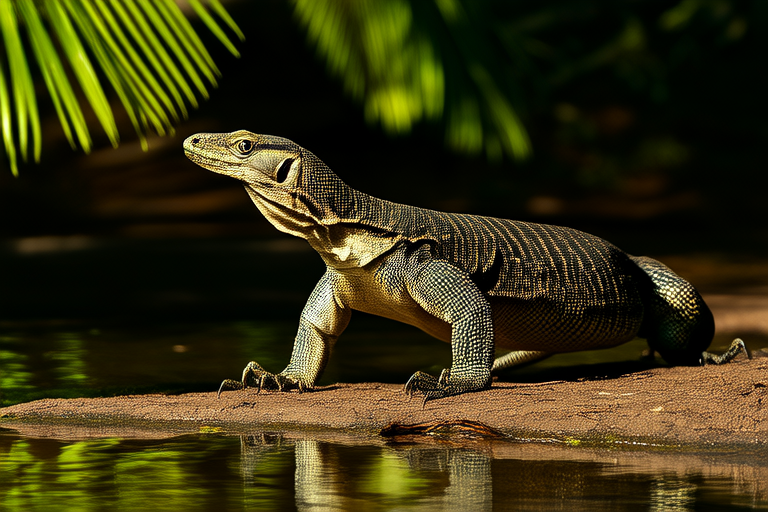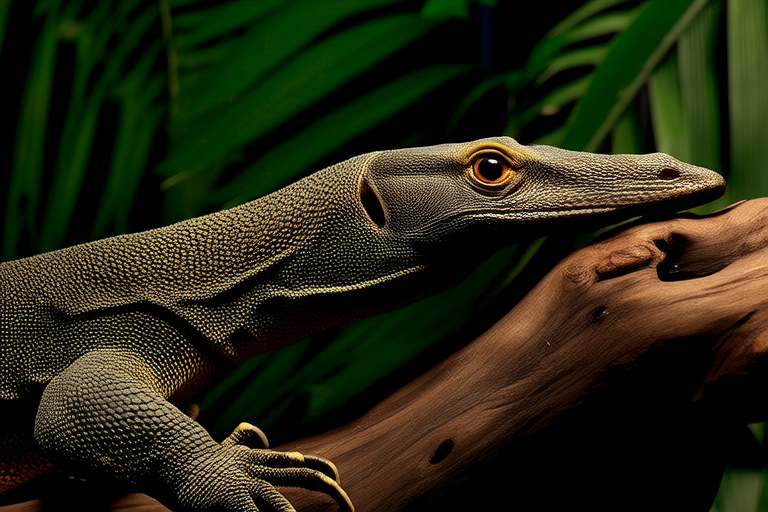
Top 10 Fascinating Facts About Water Monitors That Will Leave You Amazed
The water monitor (Varanus salvator) is one of the largest lizards in the world, captivating the imagination of nature enthusiasts and scientists alike. These formidable reptiles have been revered in many cultures for centuries, often appearing in myths and legends. From their impressive size to their remarkable hunting techniques, water monitors possess a myriad of fascinating traits that make them stand out in the animal kingdom. Here are ten astonishing facts about these creatures that will leave you in awe.
1. The Largest Lizard on Earth
Water monitors can grow to an astonishing length of up to three meters, making them the second-largest lizard species after the Komodo dragon. Their impressive size is not just a matter of height; they also weigh up to 50 kilograms. Imagine encountering such a massive creature while exploring a tropical forest!
Historically, these lizards were so feared by early European explorers that they were sometimes referred to as ‘sea serpents.’ Their imposing presence has long inspired both fear and fascination among those who encounter them.
2. Exceptional Physical Characteristics
Water monitors boast a sleek, elongated body covered in tough, scaly skin that ranges from dark brown to olive green. This coloration provides excellent camouflage in their natural habitats, allowing them to blend seamlessly into the environment. They have a long, powerful tail that acts as both a rudder in water and a weapon when threatened.
One of their most distinctive features is their forked tongue, which they use like a chemosensory organ to detect prey. By flicking their tongue in and out, they gather chemical particles from the air and ground, helping them locate food even in dense vegetation.
3. Versatile Habitat
These lizards are incredibly adaptable and can thrive in various environments, including freshwater rivers, mangrove swamps, and coastal areas. Their ability to live both on land and in water gives them access to a wide range of prey. In fact, water monitors are known to dive into the water to catch fish, crabs, and other aquatic creatures.
In Southeast Asia, where water monitors are native, they are commonly found near rice paddies, where they help farmers by preying on crop pests like rodents.
4. Carnivorous Giants
Water monitors are carnivorous predators with a varied diet. Their menu includes insects, fish, amphibians, small mammals, birds, and even other reptiles. They are opportunistic feeders, meaning they will eat whatever is available. Their strong jaws and sharp teeth enable them to tackle large prey, while their keen sense of smell helps them track down meals.
Anecdotal evidence suggests that water monitors have even been observed attacking venomous snakes, demonstrating their bravery and predatory prowess.
5. Stealthy Hunters
Water monitors employ a combination of stealth and speed to catch their prey. They are known for their ability to move silently through their surroundings, thanks to their flat, wide feet and flexible bodies. Once they’ve spotted a potential meal, they can accelerate rapidly to capture it.
One of the most intriguing aspects of their hunting strategy is their use of ambush tactics. They may lie in wait for hours, patiently watching for an opportunity to strike.
6. Remarkable Swimming Abilities
Equipped with strong limbs and a powerful tail, water monitors are adept swimmers. They can stay submerged for up to 30 minutes, allowing them to hunt underwater for extended periods. Their nostrils are positioned high on their snouts, enabling them to breathe while partially submerged.
Historical records indicate that sailors once reported seeing water monitors swimming alongside their ships, sometimes climbing aboard to explore new territories.
7. Unique Adaptations for Survival
Water monitors have several adaptations that enhance their survival in the wild. For instance, they can tolerate a wide range of temperatures, from tropical heat to cooler climates. Their skin secretes a mucus-like substance that keeps them moist in dry conditions, preventing dehydration.
Moreover, these lizards have a highly developed sense of hearing, despite lacking external ear structures. They can detect vibrations through their jawbones, allowing them to hear sounds even under water.
8. Complex Social Behavior
Contrary to popular belief, water monitors are not solitary creatures. They engage in complex social behaviors, including communication through vocalizations, body postures, and chemical signals. Males compete for dominance during breeding season, and females may exhibit nurturing behaviors towards their offspring.
Observations suggest that younger water monitors often form loose associations, sharing feeding grounds and resting spots. This behavior indicates a level of social interaction not typically associated with reptiles.
9. Ancient Ancestors
Water monitors belong to a lineage of lizards that dates back millions of years. Fossil records show that their ancestors lived during the dinosaur era, making them part of a group that has survived numerous environmental changes over time.
Their evolutionary success is attributed to their versatile diet, adaptability to different habitats, and ability to thrive in diverse ecological conditions. This resilience has allowed them to remain a dominant predator in their ecosystems.
10. Conservation Concerns
Despite their widespread distribution, water monitors face threats due to habitat loss, poaching for the exotic pet trade, and overharvesting for their meat and skins. Many populations are declining, particularly in areas where human activity is intense.
Conservation efforts are crucial to protect these magnificent creatures. By supporting organizations dedicated to preserving biodiversity, we can help ensure that future generations will continue to marvel at the wonders of water monitors.
Call to Action
Water monitors are truly remarkable animals, deserving our admiration and protection. Learn more about these fascinating creatures and how you can contribute to their conservation. Whether through donations, volunteering, or simply spreading awareness, every effort counts in safeguarding their future.






